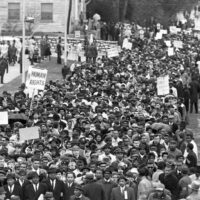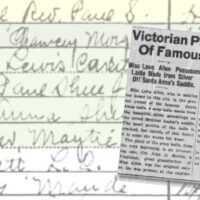In early November, the Mill Springs battlefield is hosting a national Civil War re-enactment that will draw thousands of re-enactors and spectators to that Pulaski County site.

This visitation will have a positive economic impact on the region. It will also bring more attention to the battlefield’s new status as a National Monument.
As a National Monument, the Mill Springs battlefield has the same designation as places like Fort McHenry, Little Big Horn and the Statue of Liberty. But why is this Bluegrass State battleground worthy of this status?
It is because the Battle of Mill Springs was an important turning point in the Civil War that is due greater attention.
On Jan. 19, 1862, Confederate troops marched northward from the Cumberland River to attack advancing Union troops. Fought west of Somerset in the fog and rain, it became a battle marked by confusion.
Muddy roads slowed a piecemeal rebel attack and the fog hindered visibility. One Union soldier commented, “We could not see the enemy in person at first, but fired at the gun-flashes.”
The terrain helped the Federal troops, who held a strong defensive position against the advancing rebels. Moreover, many of the Southern soldiers were armed with antiquated flintlock rifles. In addition to having a shorter range, some of the Confederates’ weapons failed to fire because of the rain.
The chaos hurt the Southern army at its highest levels. At the zenith of the action, Confederate Brigadier General Felix Zollicoffer accidentally wandered into Union lines. Members of the 4th Kentucky Union Infantry Regiment shot him down.
Shortly thereafter, the Union commander sent the 9th Ohio Infantry Regiment — a unit comprised primarily of German immigrants — on a charge that drove the routed rebels nearly 10 miles to the Cumberland River.
In the four-hour fight, the Union army lost 39 killed and 207 wounded. The bested Confederates suffered 125 killed, 308 wounded and 95 missing.
Although smaller than other Kentucky battles, including Richmond and Perryville, the fight was one of national consequence.
The Union victory at Mill Springs — one of the first significant Northern victories of the war — helped shatter a defensive line that the Confederates had established across southern Kentucky. This led to a series of other Union advances. Fort Henry and Fort Donelson, both located in Tennessee, soon surrendered. Nashville then dropped to Union forces. By the end of March 1862, the Confederates had fallen back to Corinth, Mississippi.
Mill Springs put Kentucky firmly in Union hands, provided Unionists with a needed victory and boosted a flagging national morale. As Union veteran Thomas Speed proclaimed, the battle “brought hope and cheer in place of dread.”
Furthermore, as German-born Buckeyes drove off the rebels in a spectacular bayonet charge, the battle highlighted the important role that immigrants would play in fighting for their new homeland.
These consequences led Major Henry Davidson of the 10th Kentucky Union Infantry to call it “the first blow which breaks the back of this rebellion.”
While Mill Springs was a critical turning point in 1862, it is also important to modern Americans.
First, the battlefield is a preservation success story that shows how public and private partnerships can protect important cultural resources, educate the public and use heritage tourism as a driver for local economic development.
The site can also teach us about the value of good leadership, the importance of reliable technology, the influence that weather has upon human events and the impact that immigrants have made on our nation’s history. These themes are relevant to 21st century Americans and make headlines daily.
As one of the newest National Monuments — and one with compelling narratives to share with the public — the site will undoubtedly have an important economic and educational impact on the state.
Therefore, we must appreciate those who worked to preserve the site while recognizing that Mill Springs is worthy of National Monument status.
(Stuart W. Sanders is the Kentucky Historical Society’s history advocate. He is the author of “The Battle of Mill Springs, Kentucky.” His next book, “The Ohio Belle Murder: Vigilante Justice in 19th Century America,” will be published by the University Press of Kentucky in March 2020.





